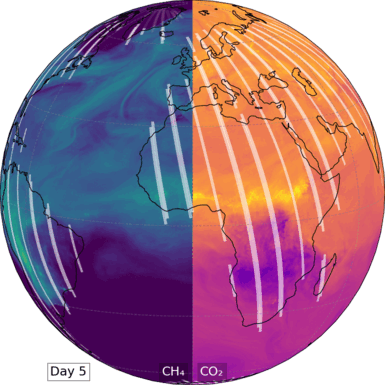Carbon-I
Course website Python for Data Science , an introduction to Python for the second year of the engineering curriculum at ENSAE (Master 1).
All content of this group is freely available here or on Github and can be tested in the form of Jupyter notebooks.
::::::
:::::: Example with the introduction to Pandas ::::::
Pandas ::::::
On the agenda:
Overall, this course offers a comprehensive content that can satisfy both beginners in data science and those looking for more advanced material:
- Data Manipulation: standard data manipulation (
Pandas), geographic data (Geopandas), data retrieval (web scraping, APIs)… - Data Visualization: classic visualizations (
Matplotlib,Seaborn), cartography, reactive visualizations (Plotly,Folium) - Modeling: machine learning (
Scikit), econometrics - Text Data Processing (NLP): introduction to tokenization with
NLTKandSpaCy, modeling… - Introduction to Modern Data Science: cloud computing,
ElasticSearch, continuous integration…
All content on this site relies on open data, whether it is French data (mainly from the central platform data.gouv or the Insee website) or American data. The program is presented linearly at the top of this page (👆️) or in a disordered manner below (👇️).
A good complement to the website content is the course given with Romain Avouac in the final year at ENSAE, which focuses more on the production of data science projects: https://ensae-reproductibilite.github.io/
::::::
:::::

::::
:::

A Phase A concept study selected by NASA in the Earth System Explorer mission proposal call.
The Carbon Investigation for High-resolution Mapping of Obscured Greenhouse Gases

Greenhouse gas studies from space are limited by scarce data in the cloudy tropics and by spatial resolution of current instruments
Carbon-I Will:
Collect 1000 times more data in the tropics by observing between clouds
#### Differentiate the sources and composition of emissions at the city block level anywhere
Objectives
Identify, characterize and quantify hotspots of CH4 and CO2 emissions across the globe
Quantify global CH4 and CO2, and CO monthly fluxes at unprecedented 12-100km resolution
Attribute and quantify the processes driving natural and anthropogenic greenhouse gas fluxes
Mission Overview
Global mode: <400m sampling of land and coastal oceans monthly
Target mode: <50m sampling of key regions (95kmx95km; over 2 million acres)
#### Absorption spectroscopy to measure CH4, CO2, CO and relevant chemical tracers